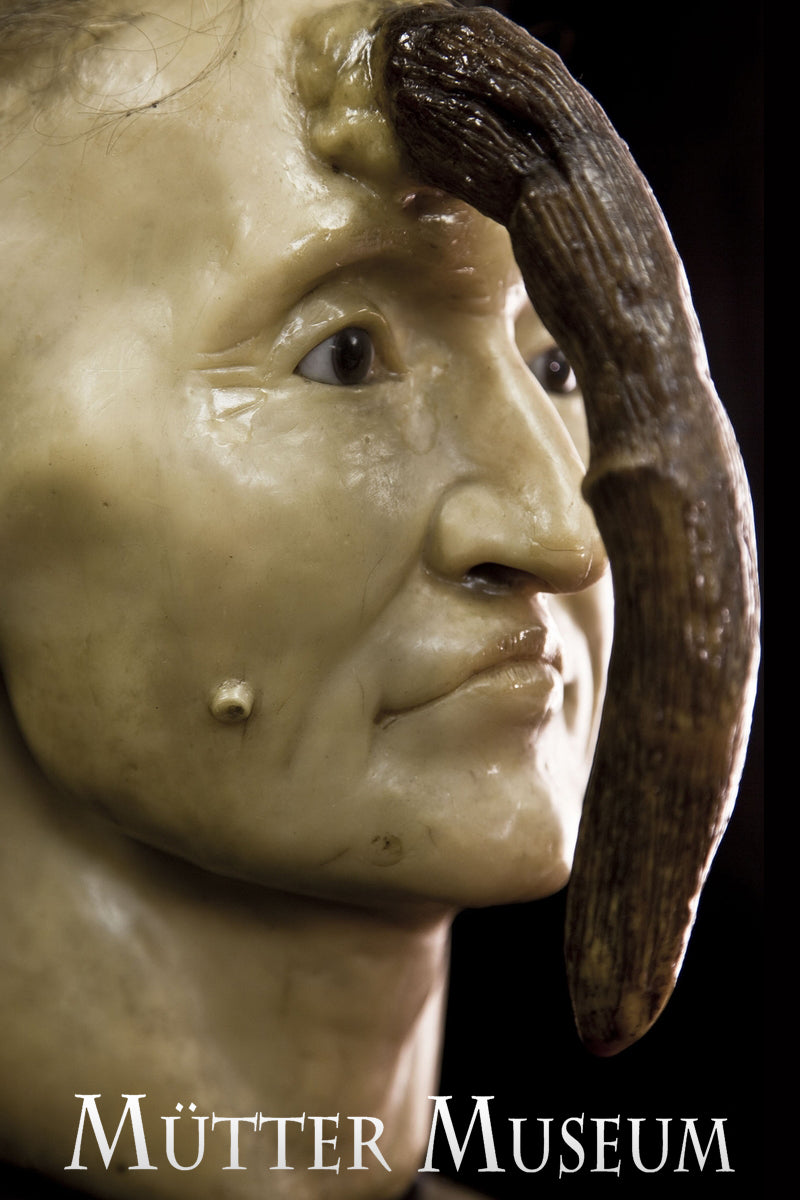The Mütter Museum in Philadelphia has long been known for its remarkable collection of medical oddities, historical artifacts, and specimens, drawing visitors with an interest in the peculiarities of human anatomy and the history of medicine. The museum, part of The College of Physicians of Philadelphia, aims to educate the public and preserve the history of medical practices and conditions.

One recent myth that has circulated online involves a so-called “bizarre 19th-century woman” with a 9.8-inch male appendage growing from her forehead—allegedly part of the Mütter Museum’s collection. However, this story is fictional and has no basis in the museum’s actual records or exhibits.
The Mütter Museum is no stranger to unique displays of rare medical conditions, such as the plaster cast of the famed “Soap Lady,” whose body fat transformed into a soap-like substance posthumously due to unique chemical conditions in her burial. Another well-known exhibit includes the skull collection, which showcases the incredible diversity in human cranial structure and has been instrumental in studies related to genetic variation and developmental anomalies.

Though the museum indeed has a selection of rare and unusual specimens, such as preserved organs and congenital deformities, the story of a woman with a male genital feature on her forehead is simply a fabrication, likely created to capitalize on the museum’s reputation for unusual artifacts.

Stories like this often stem from the historical fascination with “curiosities” that dates back to the 19th century when traveling sideshows exhibited so-called “human wonders” with exaggerated or fictionalized characteristics to captivate audiences. People with unique conditions or deformities were often put on display, sometimes willingly and sometimes exploited, as “freak shows” attracted widespread public interest. While modern sensibilities reject these exploitative practices, museums like the Mütter offer respectful educational displays, providing insights into human biology, genetics, and the progress of medical science.
The museum’s genuine exhi
bits offer plenty of fascination without the need for exaggerated myths. Its collection is curated not only to captivate but also to inform visitors about the complexities of human anatomy, the advancements in medical treatment over centuries, and the often-misunderstood nature of medical anomalies. For those intrigued by authentic medical history and real specimens, the Mütter Museum remains one of the most engaging destinations to explore the vast and sometimes unsettling diversity of human biology.